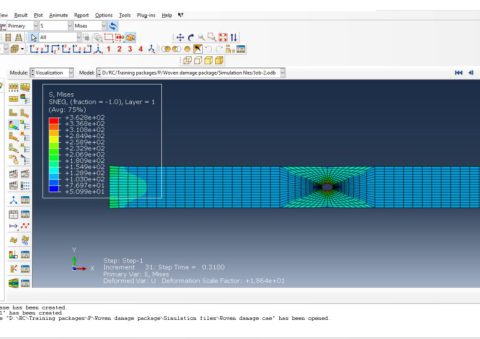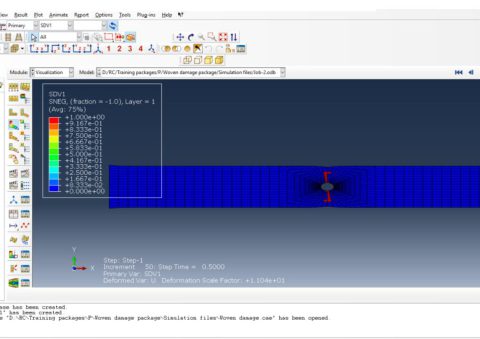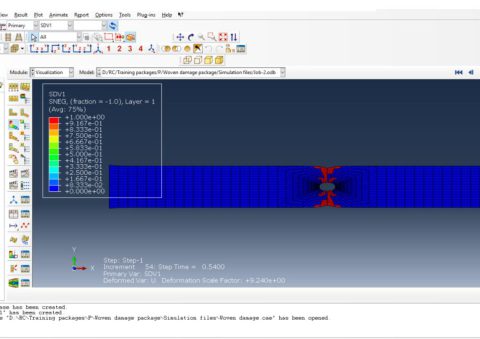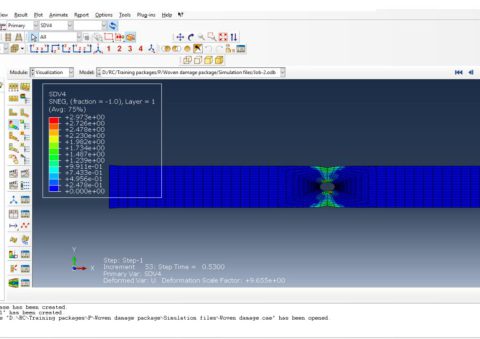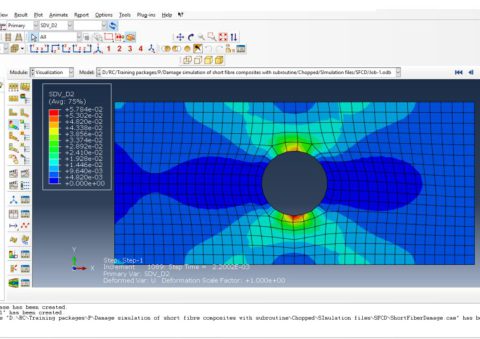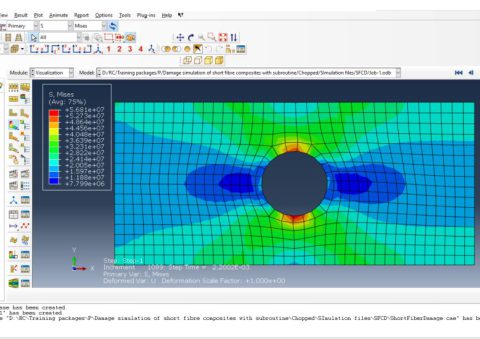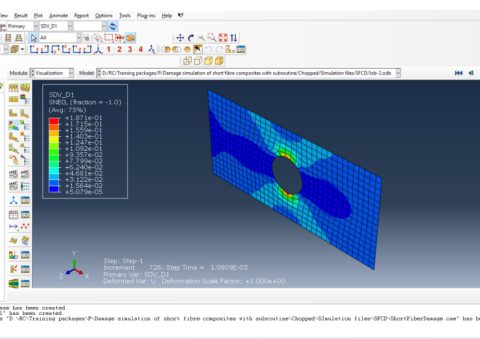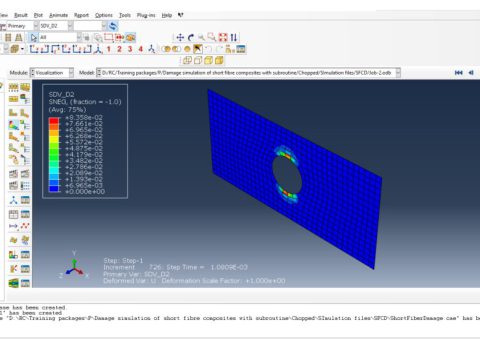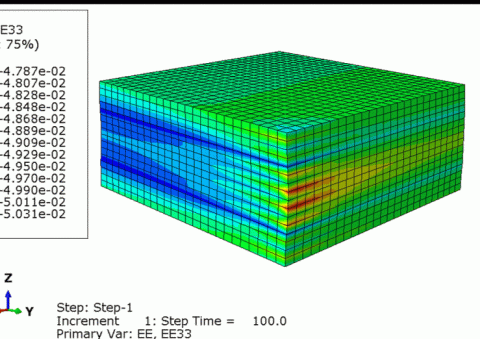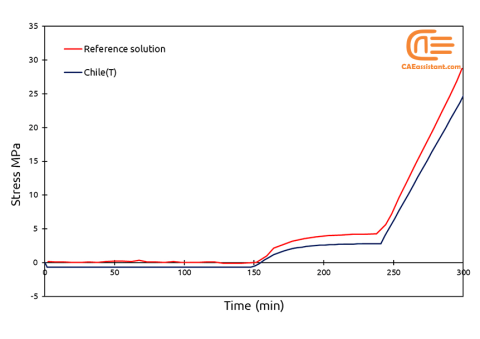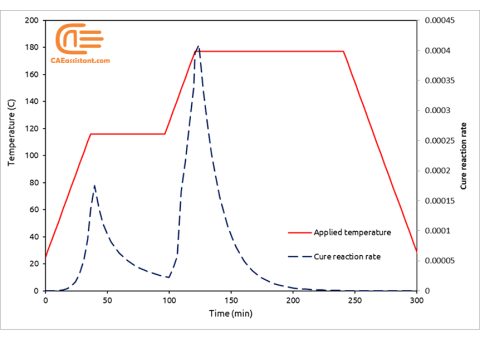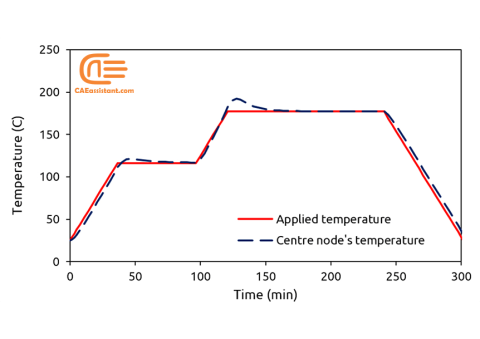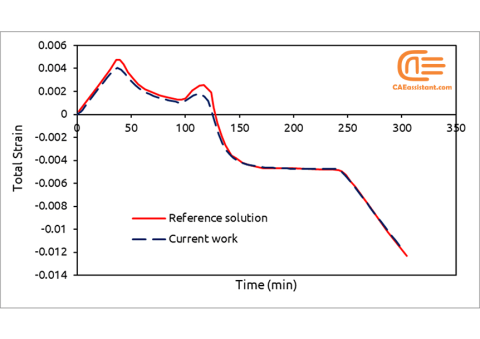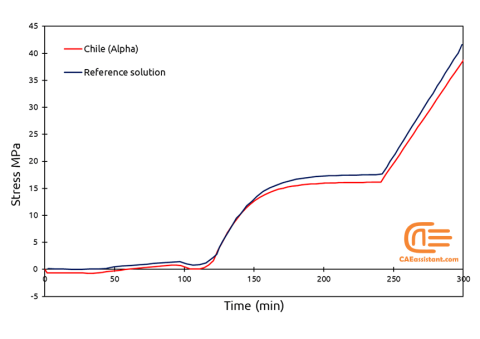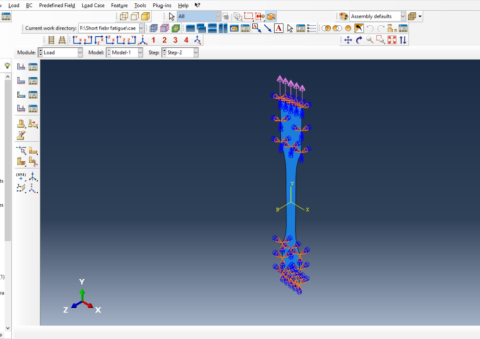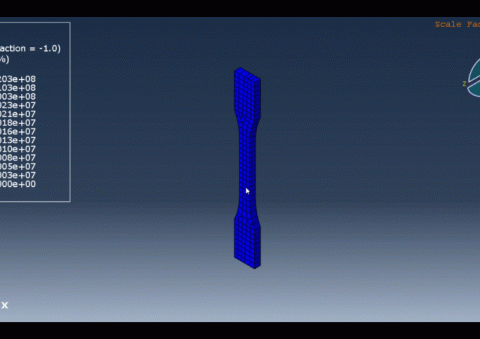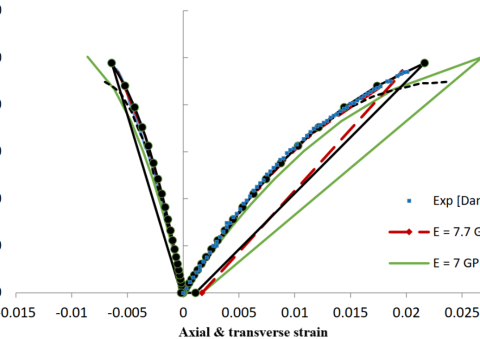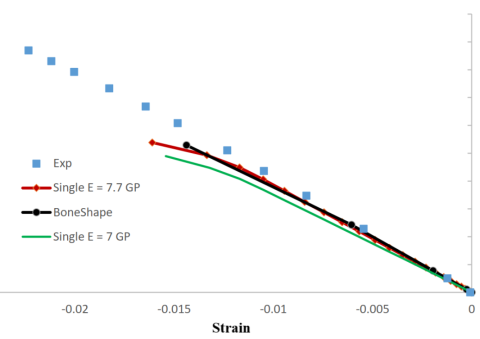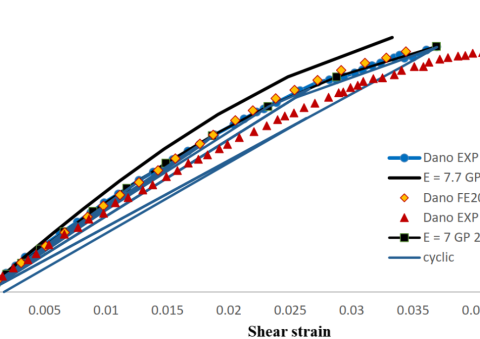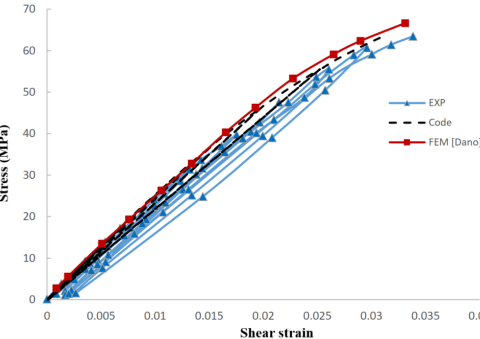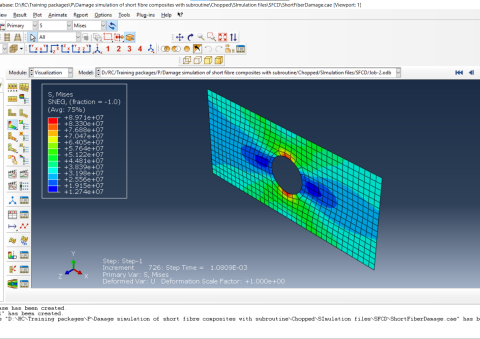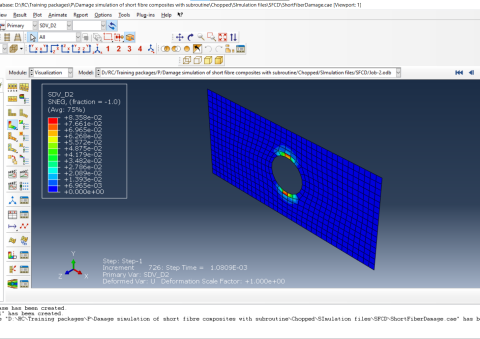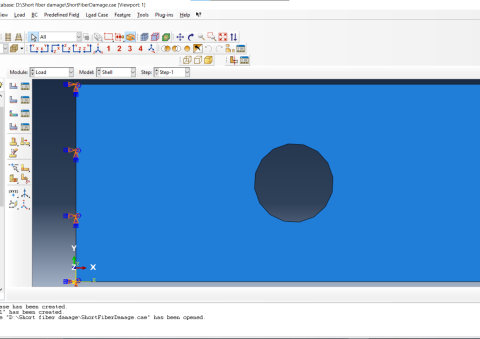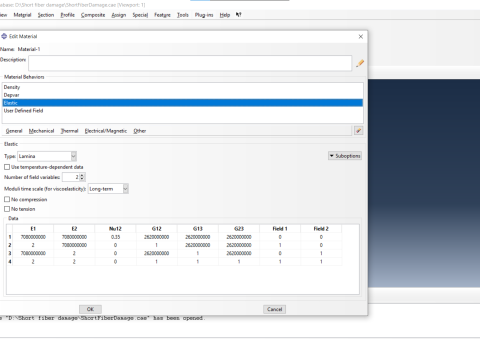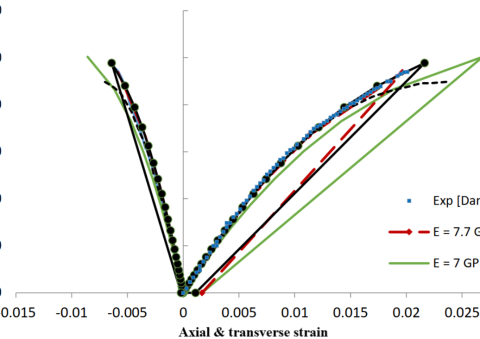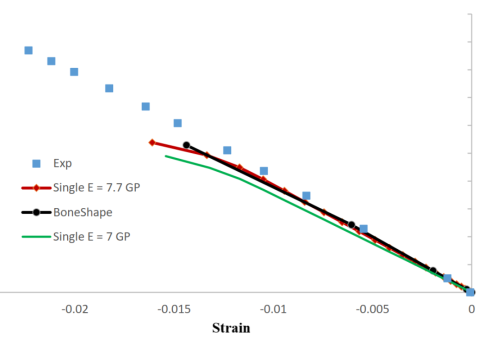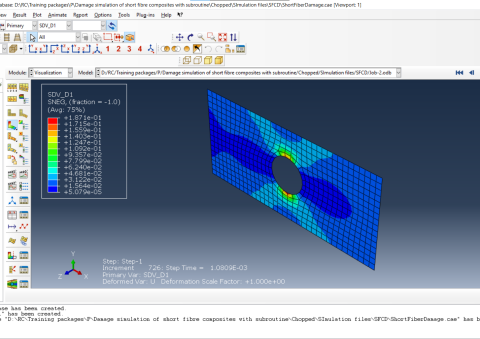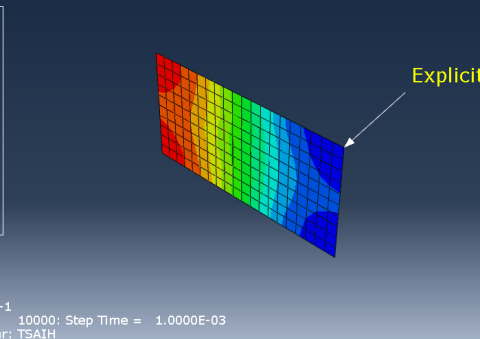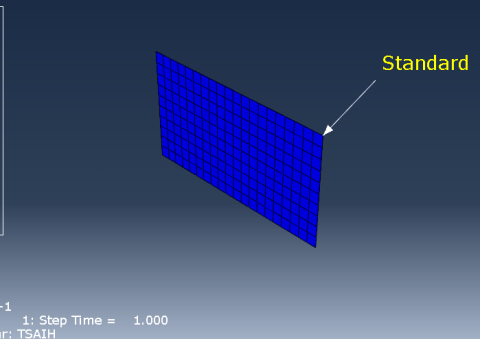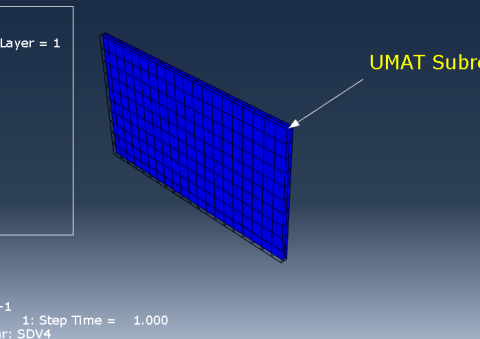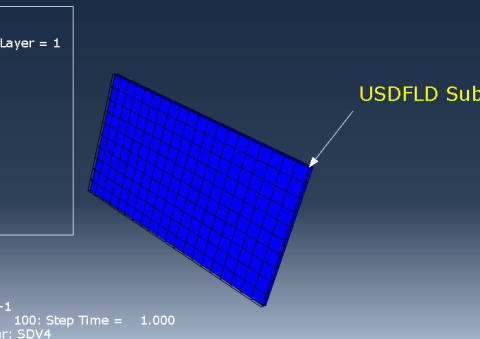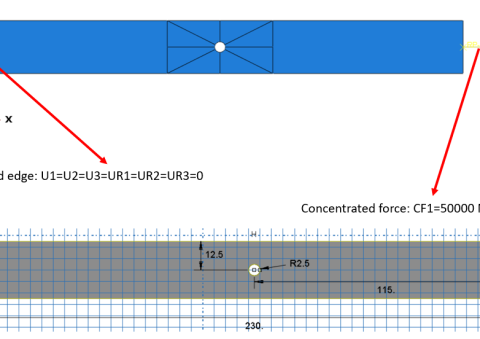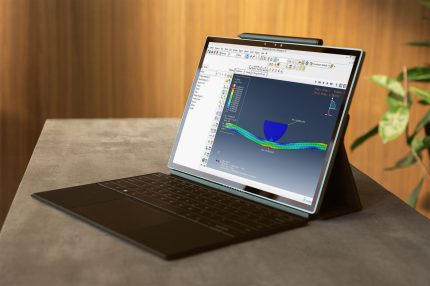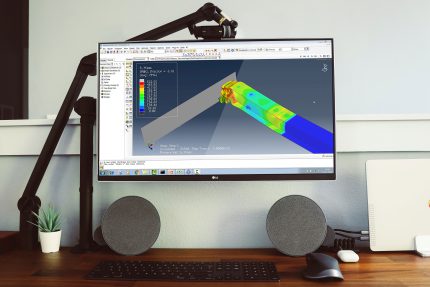MASTER COMPOSITE SIMULATION IN ABAQUS
Composite Simulation Course Overview
In this comprehensive online course, you’ll delve into the world of composite material modeling using Abaqus software. We’ll guide you through creating accurate finite element models for various composites, including unidirectional, woven, and chopped fiber configurations. You’ll learn to model different types of damage within these composites, including wood composites like balsa wood.
The program doesn’t stop there. We’ll empower you to write your own custom material models and damage functionalities using subroutines based on Abaqus’ built-in capabilities like 3D continuum, Hashin, and Puck models. Finally, you’ll explore simulating curing and fatigue behavior in composites, leveraging the power of these advanced techniques.
Composite Simulation Course Composite fem Course
By enrolling in this course you’ll learn:
1. Comprehensive Abaqus Composite Modeling:
Gain a thorough understanding of modeling materials of unidirectional, woven, wood and chopped composites in Abaqus, from basic concepts to advanced damage analysis.
2.Damage Initiation and Progression:
Master the techniques to simulate and analyze damage initiation and progression within composite materials models.
3.Fatigue Simulation with Subroutines:
Deleted:Learn how to utilize subroutines like UMAT, VUSDFLD, and USDFLD to perform accurate fatigue analysis of composite models .
4.Practical Applications:
Apply your newfound knowledge to solve real-world problems in various fields, including aerospace, automotive, and subsea industries.
5.Cohesive and curing Simulation:
How to simulate curing process in composites, based on each mentioned models and how to model cohesive damage and fatigue.
By enrolling in this course you can use lots of composite simulation examples available on the Youtube channel
and there are various packages in our video shop that are usually covered in this course, you can find them in the Composite category.
Composite FEA
Composite FEM Course
-
- Lesson 1-1 :Fundamentals
-
- Workshop 1-1: Stress analysis of woven composite plate under compression (microscopic analysis)
-
- Workshop 1-2: Stress analysis of unidirectional multilayered composite plate under compression (macroscopic analysis)
-
- Workshop 1-3: Stress analysis of composite by RVE (micro modeling) under normal displacement
Composite Damage Course
-
- Lesson 2-1: Simulation of unidirectional composite damage in Abaqus
-
- Workshop 2-1: Static analysis of damage initiation and progressive damage based on HASHIN failure criterion in holed composite plate under non-uniform loading (shell element)
-
- Workshop 2-2: Static analysis of stress based damage initiation criterion on holed composite plate under complex non-uniform loading (continuum shell element)
-
- Workshop 2-3: Investigation of damage initiation and progressive damage based on criteria in the impact of a bullet on the a multilayer composite cylinder shell (shell element)
-
- Workshop 2-4: High-speed Impact analysis on multi-layered composite plate based on HASHIN failure criterion (damage initiation and progressive damage/ physical based criterion/ shell element))
-
- Workshop 2-5: Impact analysis on composite plate with continuum shell element (damage initiation and progressive damage)
-
- Lesson 2-2: Simulation of composite Hashin damage in 3d continuum element in Abaqus (UMAT-VUMAT-USDFLD)
-
- Workshop 2-6:Simulation of composite Hashin damage in 3d continuum element in Abaqus with UMAT
-
- Workshop 2-7: Simulation of composite Hashin damage in 3d continuum element in Abaqus with VUMAT
-
- Workshop 2-8: Simulation of composite Hashin damage in 3d continuum element in Abaqus with USDFLD
-
- Lesson 2-3: What is woven composite?
-
- Lesson 2-4: Woven composite modeling
-
- Lesson 2-5: Damage in woven composites
-
- Lesson 2-6: How to apply damage criterion in Abaqus?
-
- Workshop 2-9: Damage simulation of a woven composite plate
-
- Lesson 2-7: What is short fiber composite (SFC)?
-
- Lesson 2-8: Short fiber composite modeling
-
- Lesson 2-9: Damage in short fiber composites (dano model)
-
- Workshop 2-9: Composite plate with a hole with plane stress element
-
- Workshop 2-10: Composite plate with a hole with shell element
-
- Workshop 2-11: Lemaitre damage UMAT scripting
-
- Workshop 2-12: Mean-field homogenization Abaqus simulation of composite case study
-
- Workshop 2-13: Mean-field homogenization Abaqus simulation of composite case study edit INP script
-
- Lesson 2-10: HASHIN modified damage model for wood materials
-
- Lesson 2-11:Sandhas damage model for wood materials
-
- Workshop 2-14: Modified HASHIN subroutine implementation on one element
-
- Workshop 2-15: Sandhas subroutine implementation on one element
-
- Workshop 2-18: subroutine implementation on 3d plate with hole
-
- Lesson 2-12: All you need to know about cohesive simulation with two element-based and surface-based method
-
- Workshop 2-16: Simulation single lap joint under tension
-
- Workshop 2-17: Simulation of masonry wall in Abaqus
-
- Workshop 2-18: Debonding behavior of a double cantilever beam
Composite Curing Course
-
- Lesson 3-1: Simulation of the curing process in fiber-reinforced composites
-
- Lesson 3-2: Thermo-chemo-mechanical simulation of curing process in fiber-reinforced composites
-
- Workshop 3-1: Simulation of the curing in a prepreg laminate
-
- Workshop 3-2: Thermo-chemo-mechanical analysis of the curing process
-
- Workshop 3-3: Analysis of the curing process using the Chile(T) model
COMPOSITE FATIGUE COURSE
-
- Workshop 4-1: Composite fatigue analysis with UMAT subroutine in shell elements-part 1 (theory)
-
- Workshop 4-2: Composite fatigue analysis with UMAT subroutine in shell elements-part 2 (subroutine writing)
-
- Workshop 4-3: Composite fatigue analysis with UMAT subroutine in shell elements-part 3 (Implement modeling in Abaqus software)
-
- Lesson 4-1: Groups of composite fatigue models
-
- Lesson 4-2: Material characterization
-
- Lesson 4-3: Generalization of the failure model
-
- Lesson 4-4: Simulation of woven composite fatigue with UMAT subroutine
-
- Workshop 4-4 : Fatigue analysis on a single element
-
- Workshop 4-5 : Fatigue analysis on a complex model
-
- Lesson 4-5: Fatigue and Fiber-reinforced composites
-
- Lesson 4-6: What are short fiber composite fatigue damage model?
-
- Lesson 4-7: How to model composite material behavior?
-
- Workshop 4-6: Fatigue modeling on a standard tensile test specimen
-
- Lesson 4-8: Introduction to fatigue theory of wood
-
- Lesson 4-9: Writing subroutine line-by-line
-
- Workshop 4-7: Fatigue simulation of wood on simple model with subroutine
-
- Lesson 4-10: Theory of cohesive fatigue based on article
-
- Lesson 4-11: Writing subroutine for cohesive fatigue
-
- Workshop 4-8: Cohesive fatigue analysis of two AL specimens in the adhesive single lap joint
Our team of CAE Assistant instructors, renowned experts in their respective domains, will deliver each section of the course, providing you with unparalleled knowledge and insights.
Upon successful completion of this course, you will receive a course completion certificate. This certificate guarantees your skills with the amount of time spent, skills trained, and can be verified online.
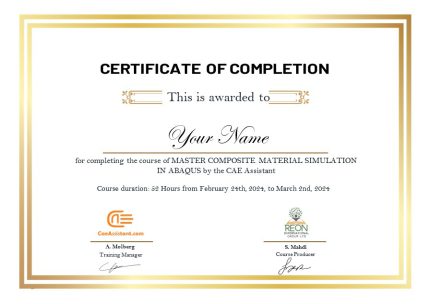
This course is perfect for:
If you are a researcher, student, university professor, or engineer working with composite materials, this training program is the perfect fit for you.
➤ Aspiring composite engineers seeking to become In high demand experts in Abaqus composite modeling
Deleted:➤ Researchers who want to develop new composite materials
Deleted:➤ Students who are studying composite engineering
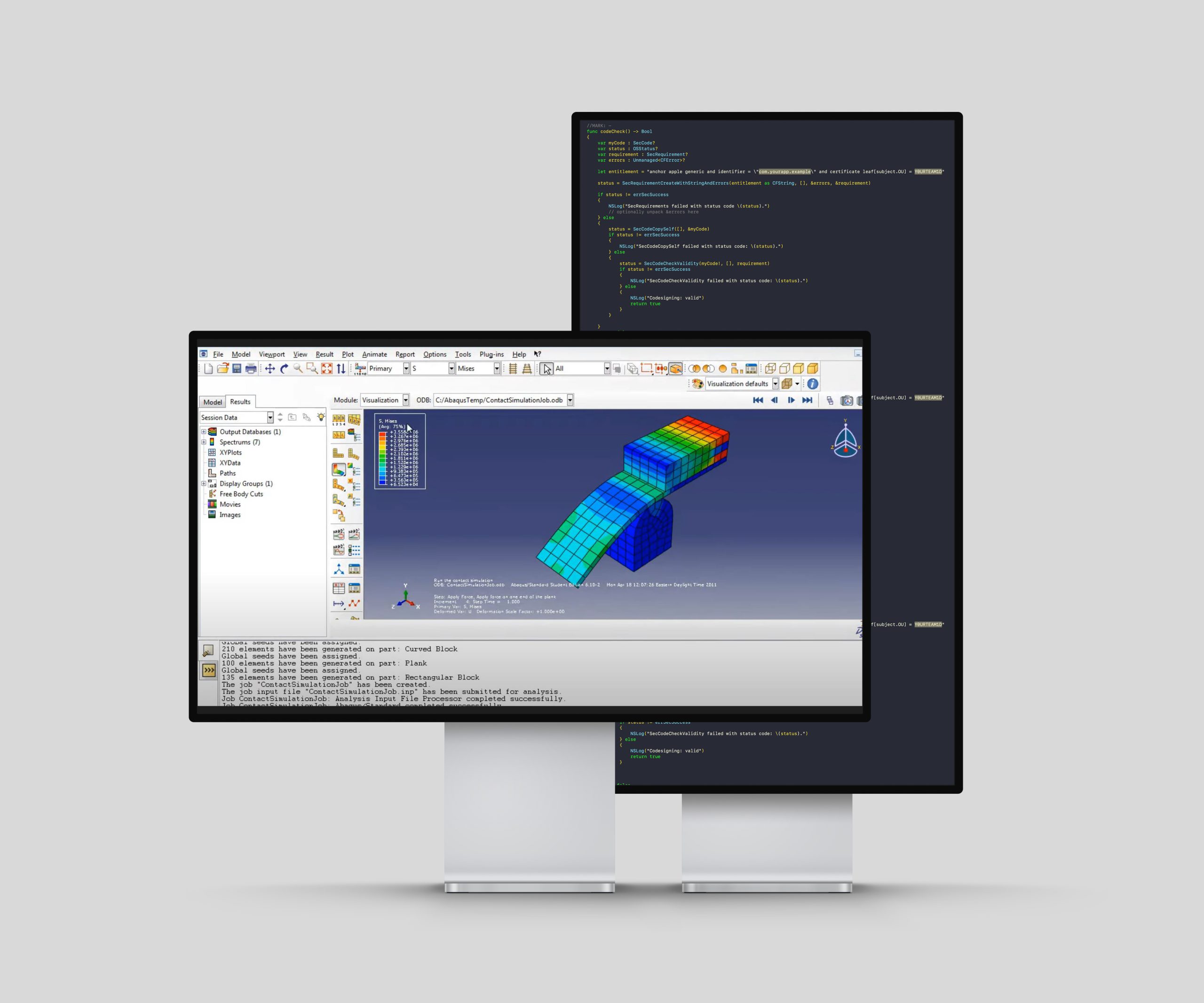
Why Choose CAE Assistant for Composite FEM Course
Frequency Asked Questions
What is the target audience for this composite simulation course?
This course is designed for engineers, scientists, and analysts who want to learn or improve their skills in simulating composite materials using Abaqus software.
What prior knowledge is recommended for this composite fem course?
A basic understanding of finite element analysis (FEA) concepts and some experience with Abaqus software would be beneficial. However, the course starts with fundamentals and gradually progresses to more advanced topics.
How is the composite fem course delivered?
The course likely utilizes a combination of video lectures, interactive workshops, and downloadable materials.
How long is the course?
—
What subroutines are covered in detail (e.g., UMAT, VUSDFLD, USDFLD)?
The course seems to have dedicated workshops focusing on using these subroutines for fatigue analysis of composite models.
Are there any assignments or exams in this composite fem course?
The course description doesn’t explicitly mention assignments or exams. It highlights workshops as a key learning element. You can check the course website or contact the provider for details.
Does the composite fem course offer a certificate upon completion?
This information might be available on the course website or by contacting the provider. Many such courses offer certificates upon successful completion.




